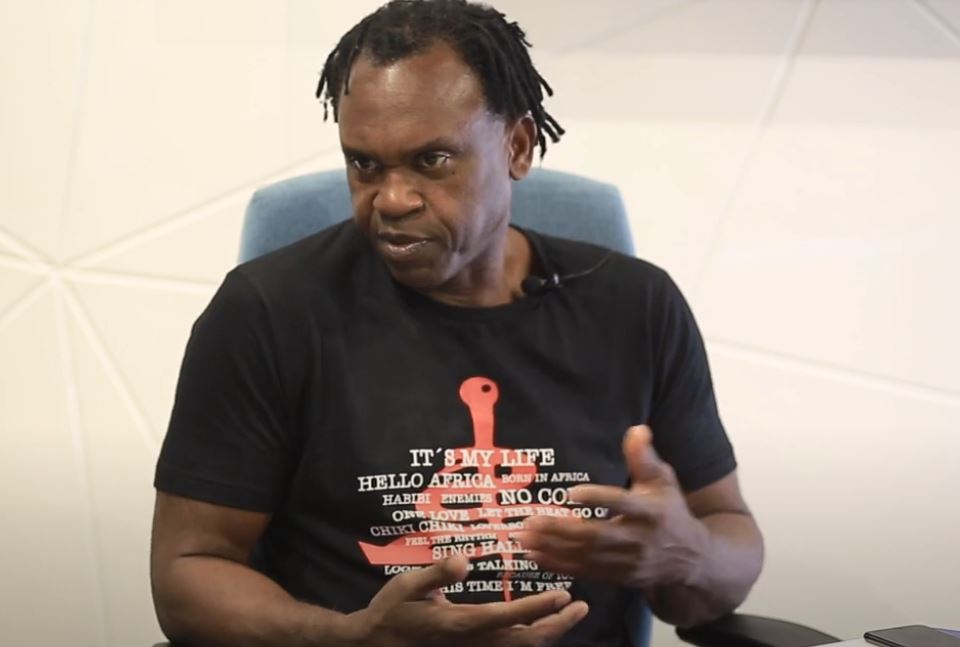The rhythms that formerly characterized European dance floors are as multi-layered as Dr. Alban’s financial rise. His transition from studying molars to energizing crowds with basslines, despite coming from a small Nigerian town, feels remarkably emblematic of talent-driven change. He created a completely new identity rather than just changing careers.
Although Dr. Alban’s net worth has fluctuated greatly in recent years, projections for 2025 put it at about $44.7 million. Interestingly, this amount isn’t solely based on standard royalties. His business strategy, which included starting his own label, Dr. Records, allowed him to diversify his sources of income early on, which is unusual for artists in his generation.
Dr. Alban – Personal & Career Information
| Full Name | Alban Uzoma Nwapa |
|---|---|
| Stage Name | Dr. Alban |
| Date of Birth | 26 August 1957 |
| Place of Birth | Oguta, Nigeria |
| Nationality | Nigerian-Swedish |
| Profession | Singer, Producer, Dentist |
| Known For | “It’s My Life”, “Sing Hallelujah” |
| Record Sales | Estimated 16 million copies |
| Primary Genres | Eurodance, Reggae, Hip-Hop |
| Years Active | 1980s–present |
| Education | Dentistry at Lund University, Sweden |
| Net Worth (2025) | Estimated $44.7 million |
| Notable Label | Dr. Records |
In the early 1990s, Dr. Alban’s distinctly assertive song “It’s My Life” dominated European radio. He became well-known as a result of this anthem, which had a strong resonance in Germany, Sweden, and the UK. Surprisingly, it achieved platinum status in several countries after selling over two million copies in Europe alone.
He made great use of his cross-cultural appeal by leveraging chart success. His Igbo heritage was ingrained in his sound from his upbringing in a family of ten children. His first song, “Hello Afrika,” a proud statement of identity, was especially avant-garde for its time—ten years before multiculturalism became a fad thanks to global streaming.
Dr. Alban put out a number of albums in the mid-1990s that did a remarkable job of keeping him relevant. Both “One Love” and “Look Who’s Talking” cemented his status as a leading figure in Eurodance. Alban adjusted over time, whereas many of his contemporaries faded. He gained creative control by starting Dr. Records, which greatly decreased reliance on commercial producers.
The album “Born in Africa” from 1996 marked a change in tone by gently reintroducing his origins. Despite not dominating the charts like its predecessors, it was more a reflection of artistic development than of commercial fatigue. His song “Sing Hallelujah!” kept up its impressive performance in compilations and retrospectives that same year.
Dr. Alban was still there in spite of the dramatic shifts in the music industry in the 2000s. His 2007 return with “Back to Basics” and his partnership with Sash! on “Colour the World” showed a persistent dedication to innovation. These endeavors strengthened his reputation as a resilient artist even though they didn’t set any new records.
Constant touring has also been one of Dr. Alban’s revenue streams, particularly at retro music festivals where ’90s nostalgia attracts sizable, well-paying audiences. Performance fees have reportedly risen over the last five years, mainly as a result of his global appeal in places like the Middle East and Eastern Europe.
Additionally beneficial has been a noticeably enhanced internet presence. His songs are still receiving a lot of streams on digital platforms, especially in Scandinavia and Germany. Streaming income reportedly accounted for over $29,000 of his income in 2023 alone. The combination of a pre-existing fan base and surprisingly inexpensive content creation proved to be an extremely effective monetization strategy.
Dr. Alban modified his 1990s hit song “Hello Afrika” to promote social distancing during the pandemic by renaming it “Hello Sverige” and then “Hello Nations.” Despite their simplicity, these remakes were especially helpful in preserving cultural relevance. This degree of reinvention without sacrificing their original sound is uncommon among Eurodance artists.
It’s particularly intriguing how Dr. Alban’s public persona remained grounded. He kept up his dental practice early on and had a relatively private life, even though he sold an estimated 16 million records. The tabloids never made a big deal out of his 2004 marriage to Swedish teacher Katrine Hermansson or their 2021 divorce.
Dr. Alban’s net worth is far less than that of celebrities like Jay-Z or Dr. Dre, but his career trajectory is equally remarkable. His success, in contrast to those artists, was the result of steady, well-considered choices and an incredibly resilient discography rather than luxury brand alliances or multibillion-dollar acquisitions.
Alban is cited as a pioneer by many contemporary Afro-European artists. Artists like MNEK and Afro B were made possible by his smooth fusion of Eurodance rhythms, cultural heritage, and entrepreneurial spirit. His legacy serves as a blueprint and source of inspiration for these artists.
Alban was able to control his narrative and maintain visibility through strategic alliances and chosen partnerships. Despite the limited short-term benefits, his decision to avoid overly commercializing his persona helped him establish credibility over the long run, which is incredibly beneficial for legacy preservation.
According to Popnable, as of mid-2025, his music brings in between $1,000 and $3,000 a month just from digital platforms, demonstrating the catalog’s timeless appeal. Although his earnings have varied over the years—he made about $568,000 in 2024 and $755,000 in 2025—the consistency is remarkable for a genre that is frequently thought of as being time-bound.


